We are planning a ~2-week field effort off Lāna‘i in July, starting ~July 6th. This will be our first field effort off Lāna‘i since December 2020 and our first mid-summer field effort there. Why Lāna‘i? The area west and southwest of the island is the best accessible location around the main Hawaiian Islands to encounter Cluster 4 of the endangered main Hawaiian Islands insular population of false killer whales. This group is not encountered or photographed very often, and we are hoping to find and work with them, to get a better understanding of how this social cluster, and the population in general, is doing. In addition to trying to photo-identify as many individuals as possible, we will be collecting small biopsy samples for studies of genetics as well as for other analyses (e.g., pollutants or stable isotopes), and hoping to deploy one or more LIMPET satellite tags to track individuals over time. While false killer whales are our primary focus for the project, we'll work with every species we encounter, collecting photos for our catalogs of bottlenose dolphins, pantropical spotted dolphins, short-finned pilot whales, and, if we are lucky with the weather, some of the less-common deeper-water species that we've previously encountered west of Lāna‘i, such as rough-toothed dolphins, dwarf sperm whales, or pygmy killer whales. We will also be recording seabirds (and photographing any unusual species), as well as game fish and bait schools, all indicators of productivity in the area.
This project is funded by a grant from the NOAA Pacific Islands Fisheries Science Center, and we also thank Pulama Lāna‘i for logistical support for this effort! The primary research crew for this effort include Mark Mohler, Brittany Guenther, Hadley Clarke, Cory Fults, Hope Ronco, Colin Cornforth, Cameron Cornforth, and Robin Baird.
If you are going to be on the water off Maui or Lāna‘i between July 6 and 19, and see false killer whales (or any unusual species), we would love to hear from you! If you don't have a cell phone number for our crew, please send an email to Robin Baird at rwbaird (at) cascadiaresearch (dot) org and we'll pass on cell phone contact information.
End of project update
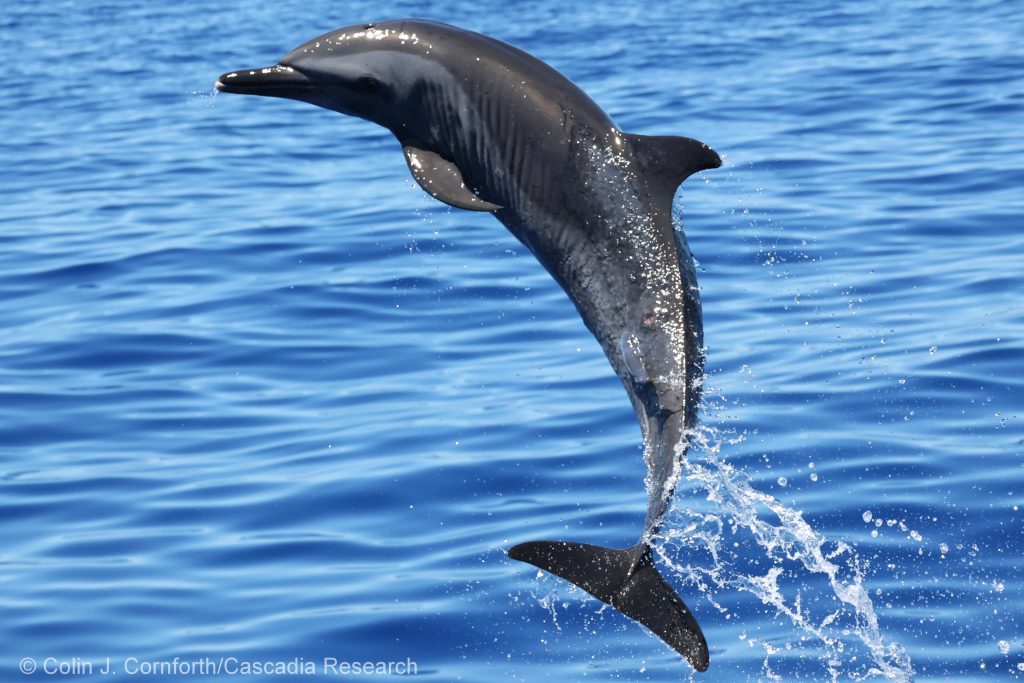
Our last day on the water was July 18th. Over the entire project we had 34 sightings of seven different species of whales and dolphins (including one we'd never seen before off Maui Nui), took over 39,000 photographs (8,000 of which were of birds!), collected 10 biopsy samples (from three species), and collected two prey samples. Overall a very successful project!
This pantropical spotted dolphin, seen with a remora on it's side, was leaping repeatedly trying to dislodge the remora. There is considerable skin damage on the dolphin, visible below and behind the dorsal fin, caused by the remora.
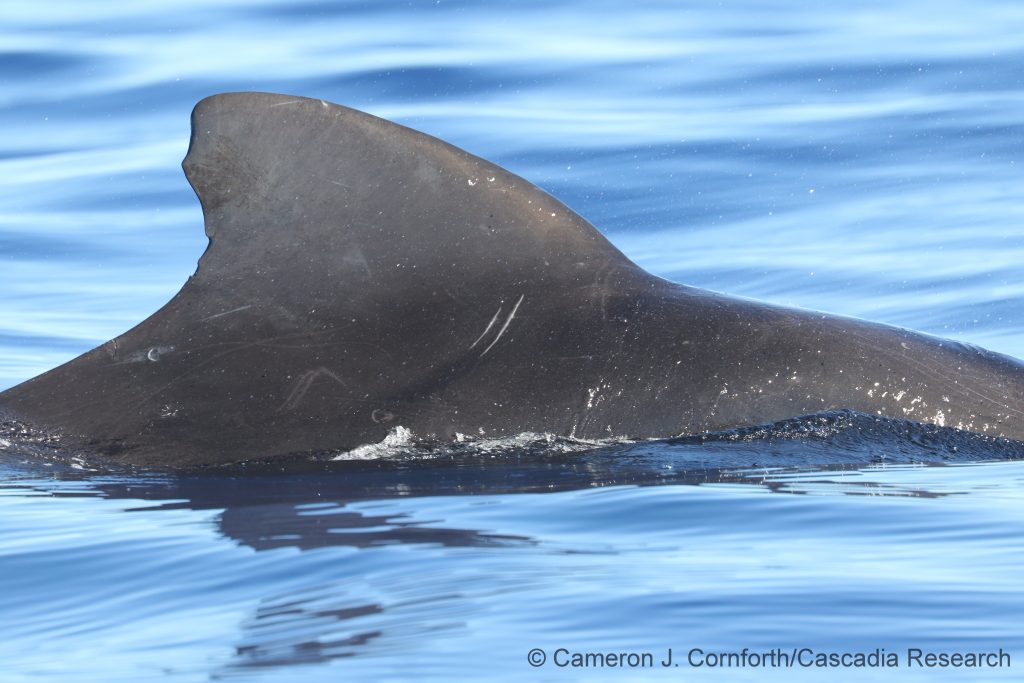
Our most frequently encountered species this trip was short-finned pilot whales, with 11 sightings (followed closely by pantropical spotted dolphins with 10 sightings). We also had six sightings of bottlenose dolphins, three sightings of spinner dolphins, two sightings of false killer whales, and single sightings each of melon-headed whales and goose-beaked whales. Although the photos of the goose-beaked whales are not great, they were good enough to confirm species - this is actually our first record ever of goose-beaked whales off Maui Nui! If you want to learn more about any of these species in Hawaiian waters, check out our species pages.
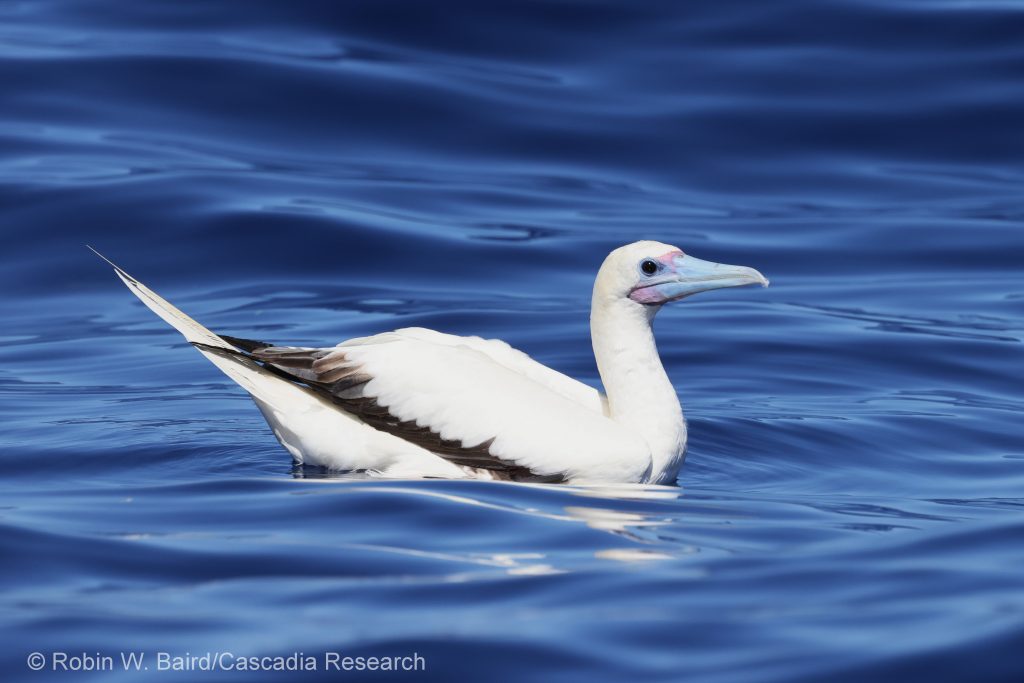
We also record and photograph seabirds on our field efforts. We spend more time on the water in Hawaiʻi than most seabird folks (who primarily work at the breeding areas on land), so our sightings can be used to better understand the at-sea distribution and relative abundance of different species. The photo above is of a Red-footed Booby (ʻĀ in ʻŌlelo Hawaiʻi), and we also saw both Brown and Masked Booby (also ʻĀ in ʻŌlelo Hawaiʻi). Our most commonly encountered seabirds this trip were ʻUaʻu kani (Wedge-tailed Shearwaters) and ʻOu (Bulwer's Petrels), with a high of 69 one day! We also saw numerous ʻUaʻu (the endangered Hawaiian Petrel), and smaller numbers of Koaʻe kea (White-tailed Tropicbirds), Koaʻe ula (Red-tailed Tropicbirds), ʻIwa (Great Frigatebirds), Noio kōhā (Brown Noddies), Noio (Black Noddies), ʻEwaʻewa (Sooty Terns), and Manu o Kū (White Terns). We were surprised that we did not see any ʻAkēʻakē (Band-rumped Storm Petrels).
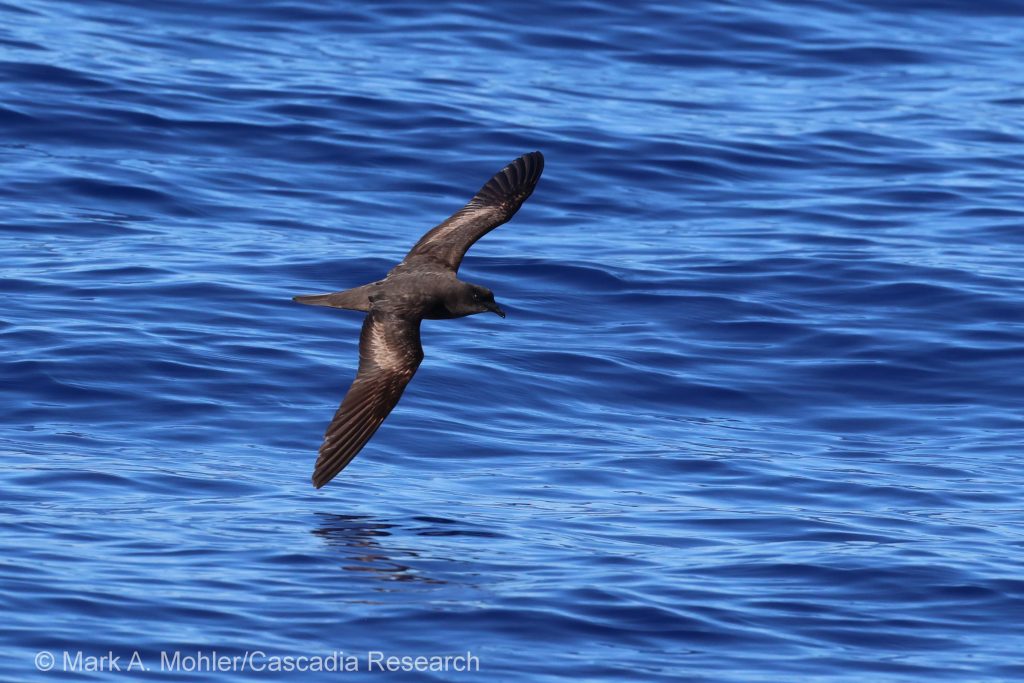
An ʻOu (Bulwer's Petrel). We saw more of this species this trip than perhaps any other trip we've ever had in Hawaiʻi
July 16th update
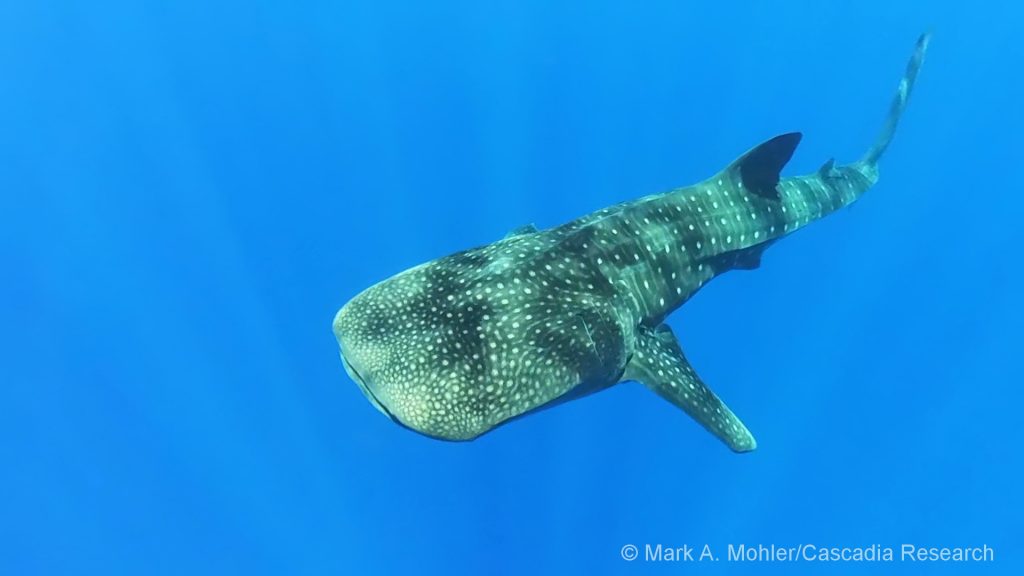
Over the last few days winds have been strong and sightings have been limited. The non-cetacean highlight was a whale shark! We were able to get video footage of the shark as it circled the boat and contributed those to the Hawaiʻi Uncharted Research Collective, which maintains a whale shark catalog for the islands.
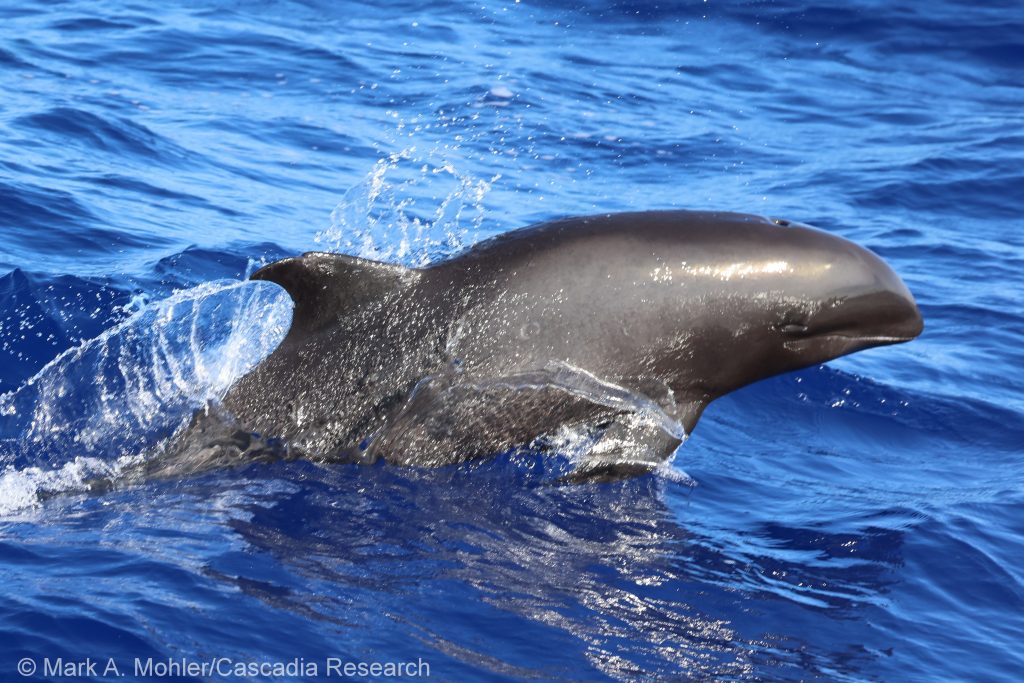
In terms of cetacean sightings the last few days, the highlight was definitely a group of melon-headed whales seen on July 14th! Melon-headed whales typically travel in very large groups (our estimate for this group was over 200 individuals). In addition to getting identification photographs of quite a few individuals, we collected one biopsy sample for genetic analyses. There are two populations of melon-headed whales in Hawaiian waters, one resident to the Kohala area of Hawaiʻi Island, and the other that ranges widely among the islands and offshore. We assume that this group is part of this widely-ranging population, but it will require comparisons of photos to our large catalog to confirm.
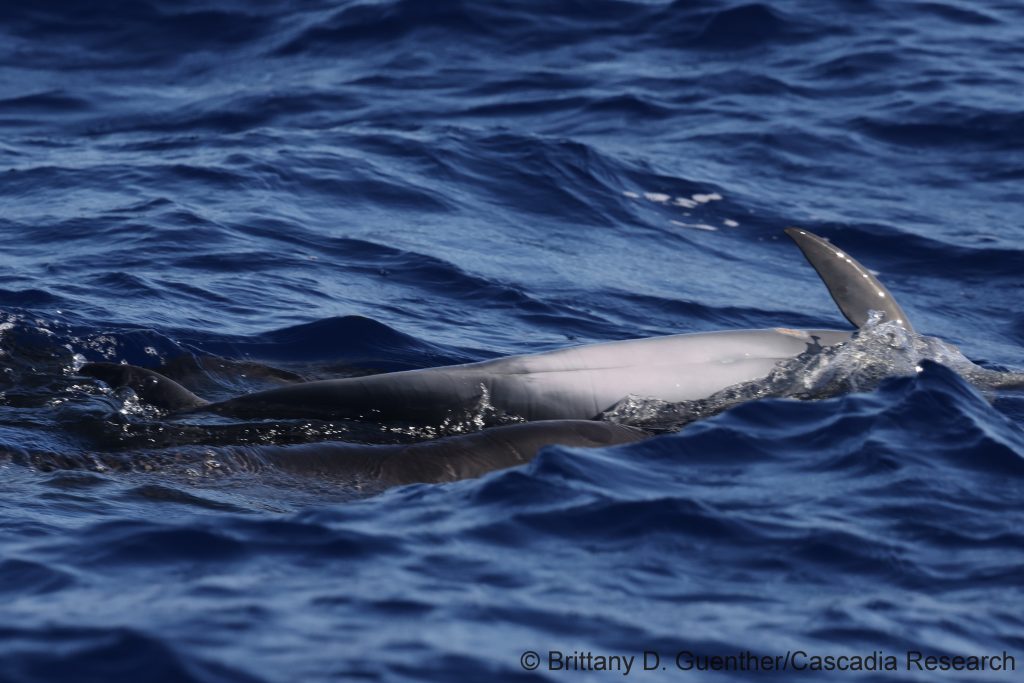
Melon-headed whales in Hawaiian waters spend most of the day resting and socializing, and during this encounter we saw lots of social behavior. In this photo, one whale, a female, is belly up, showing the pointed pec fins characteristic of this species.
July 13th update
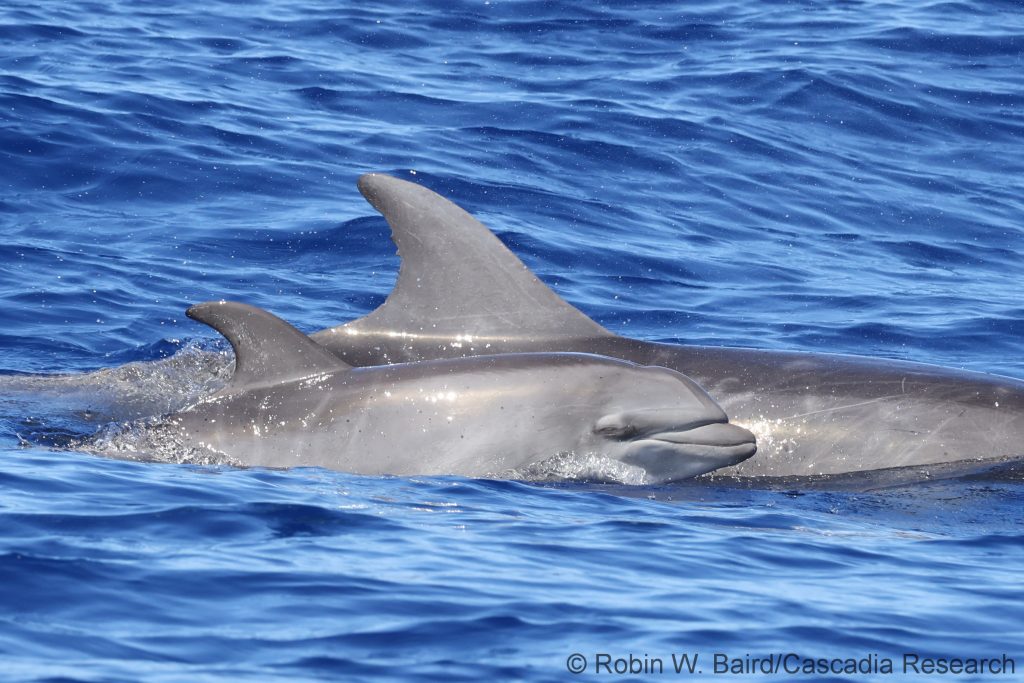
In the last two days we've had 12 encounters with three different species (not including spinner dolphins that we encountered when "off effort" heading back into the harbor). This has included four sightings of bottlenose dolphins (including the mother/calf pair above), three sightings of short-finned pilot whales, and five sightings of pantropical spotted dolphins. Over the two days we took ~8,800 photos, most of the dolphins or whales, although with a few seabirds thrown in!
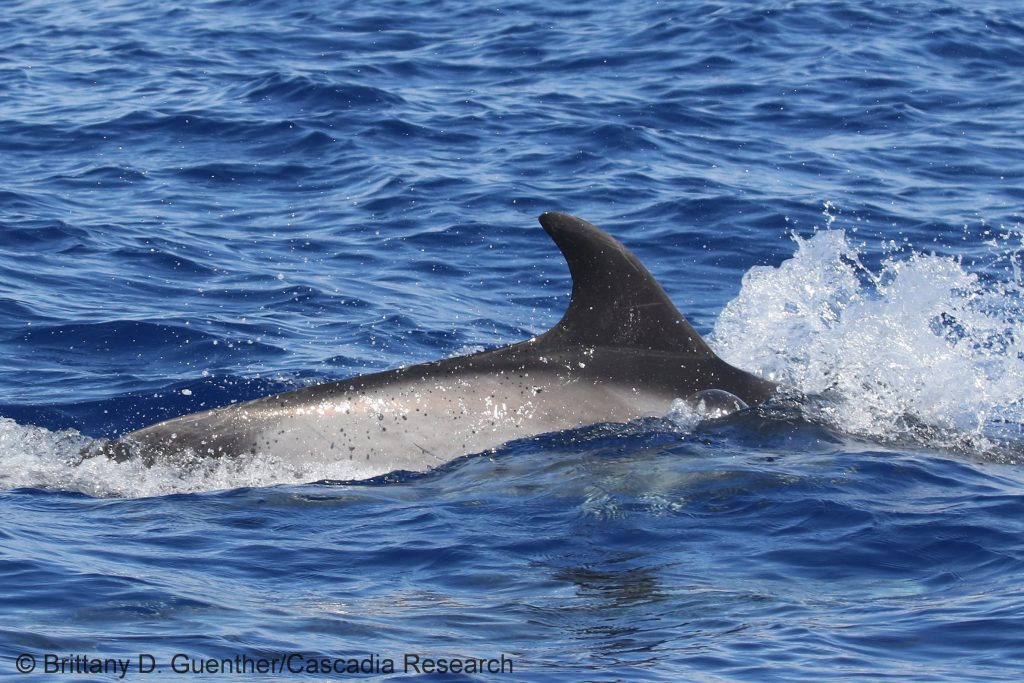
This bottlenose dolphin, likely an adult female based on a young calf in close association, has an unusual white coloration along it's right flank.
July 10th update
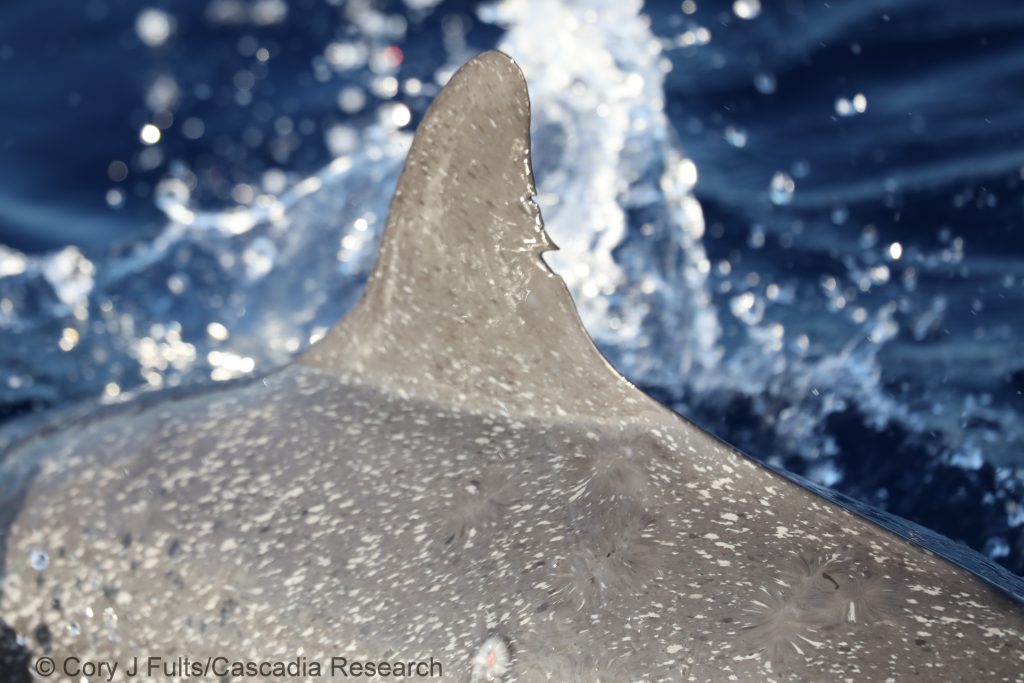
The last two days we have spent time both east and west of Lānaʻi, spending our time to the east, in the lee of west Maui, when the winds were strong, and to the west when they were a little bit less strong! We've had encounters with four species - pantropical spotted dolphins, like the one above, as well as spinner dolphins, bottlenose dolphins, and short-finned pilot whales. The spotted dolphin above is an older, extensively spotted, adult. The patterns that you can see on the right side of the photograph are areas where the dolphin has been bitten by cookiecutter sharks, and as the scars healed some of the "spots" were elongated into streaks. Right in the middle of the photo at the bottom you can see a partially healed cookiecutter shark bite wound.
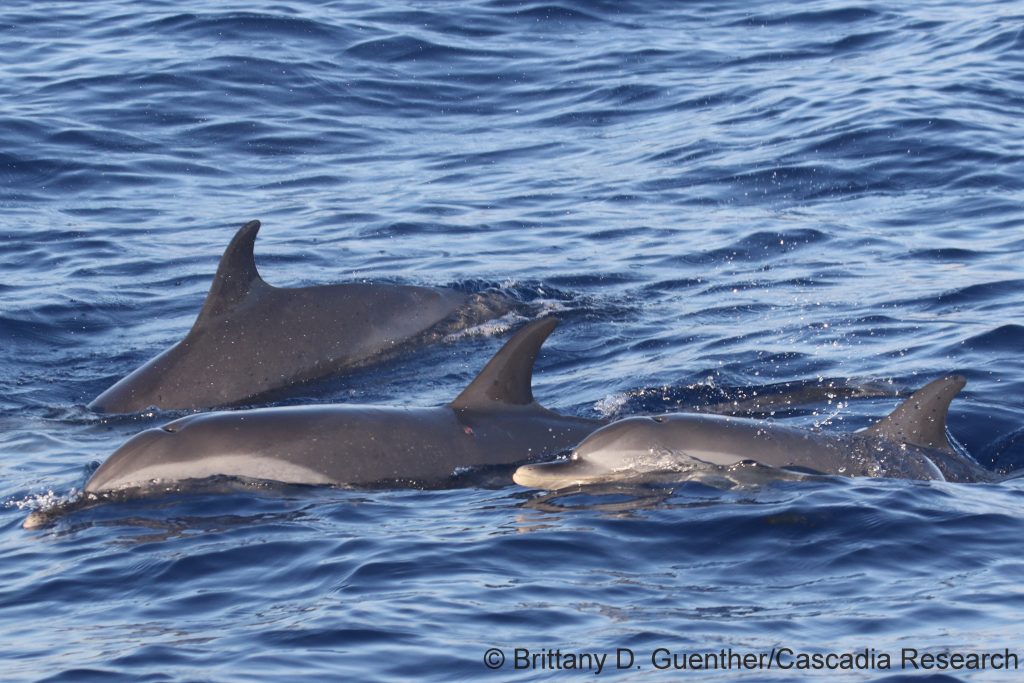
Pantropical spotted dolphins acquire spots with age - the individual in the foreground is a juvenile, with few spots, while the larger individual in the middle may be an adult female. If you want to learn more about pantropical spotted dolphins in Hawaiian waters, check out our species web page
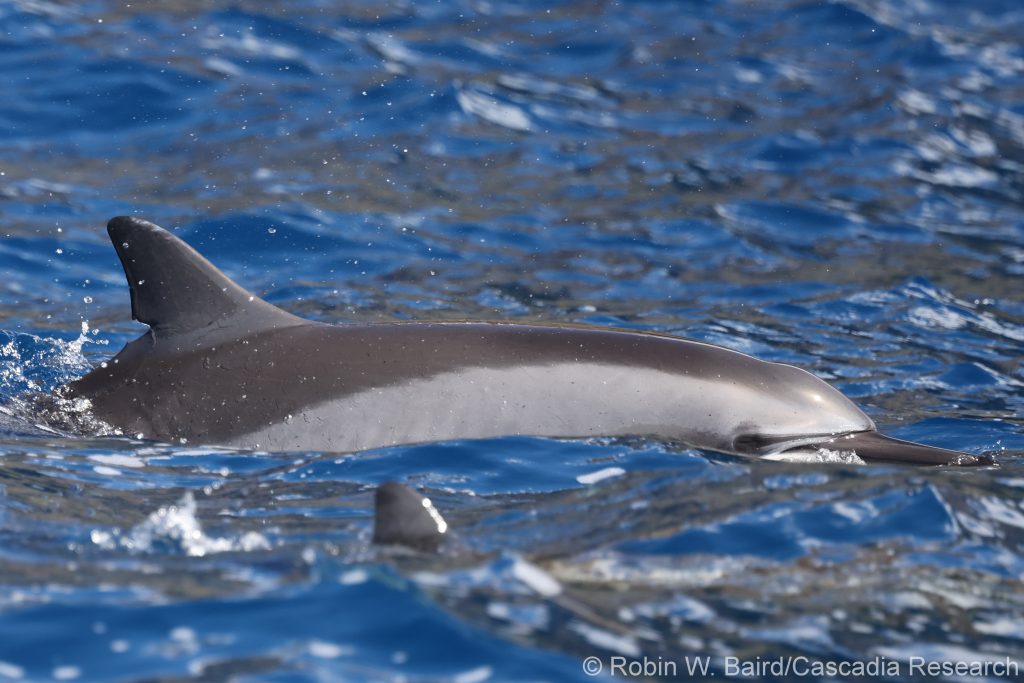
We've also encountered one group of spinner dolphins, resting along the south shore of Lānaʻi
July 8th update
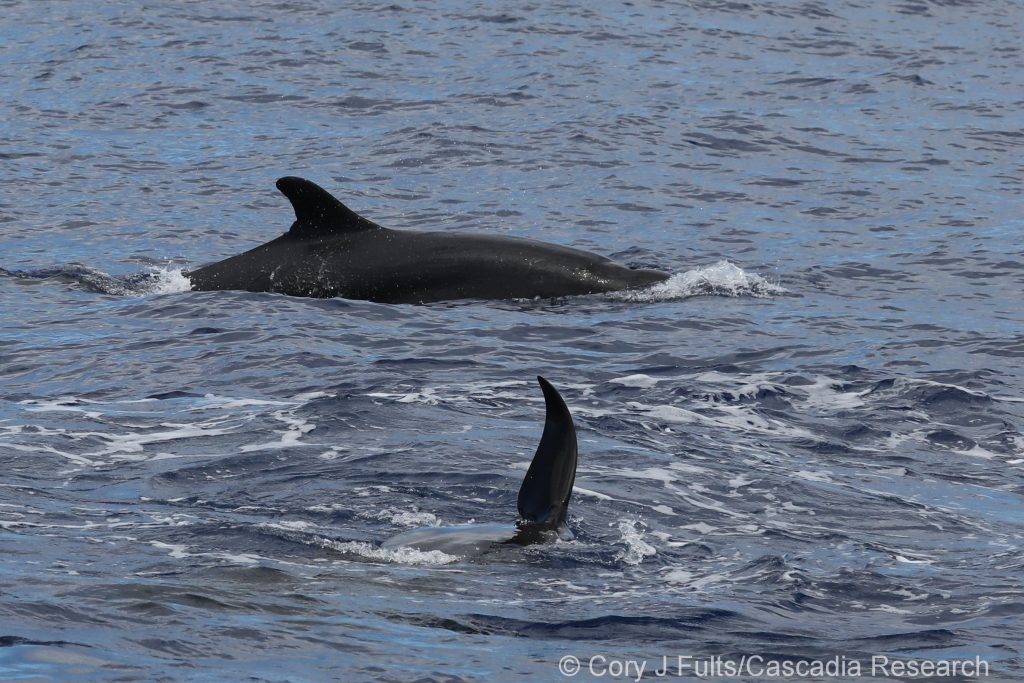
The start of the project has been quite productive, although each day is very different. On July 8th we covered ~145 km, albeit much of it in rough sea conditions, and spotted a single bottlenose dolphin the entire day. But on July 7th, covering much less ground, we had three encounters with short-finned pilot whales and one with false killer whales! The photo above shows one of the joint encounters, with a false killer whale in the background, and a short-finned pilot whale, on its side with its pec in the air, in the foreground.
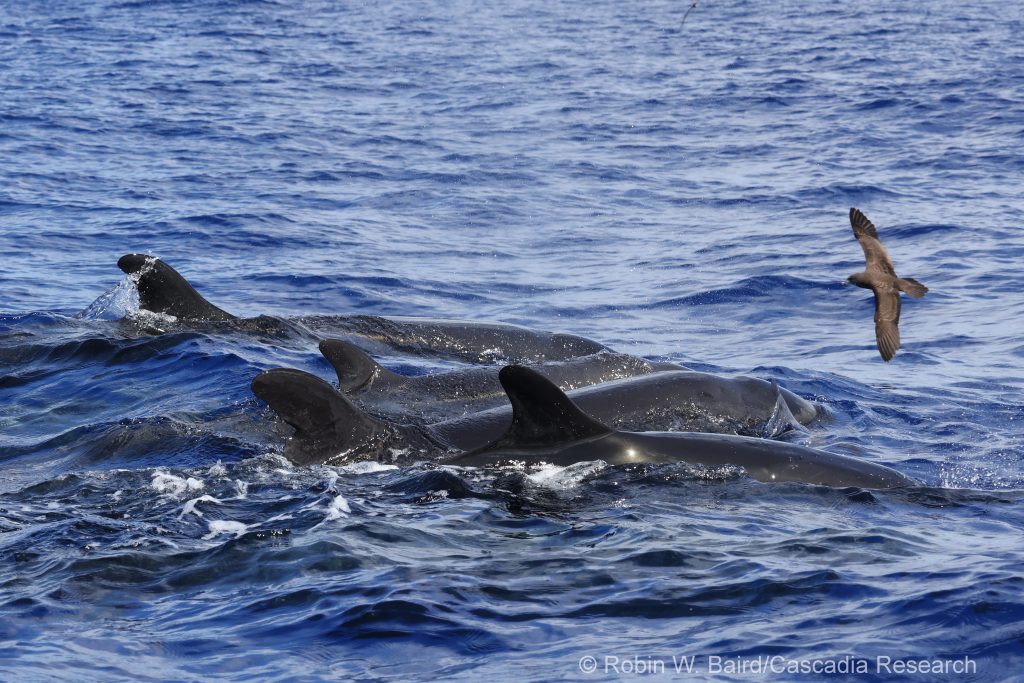
The false killer whales seen on July 7th were the same group we had encountered on July 6th, but with additional photographers on board we were able to get far more photos for identification purposes, and also collected biopsy samples from six individuals. During the encounter we witnessed three predation events, one on another billfish (most likely a Broadbill Swordfish), and two unknown fish. We were able to collect a sample of one of the fish (a small bit found floating at the surface), which can be used to genetically identify the species of fish involved.
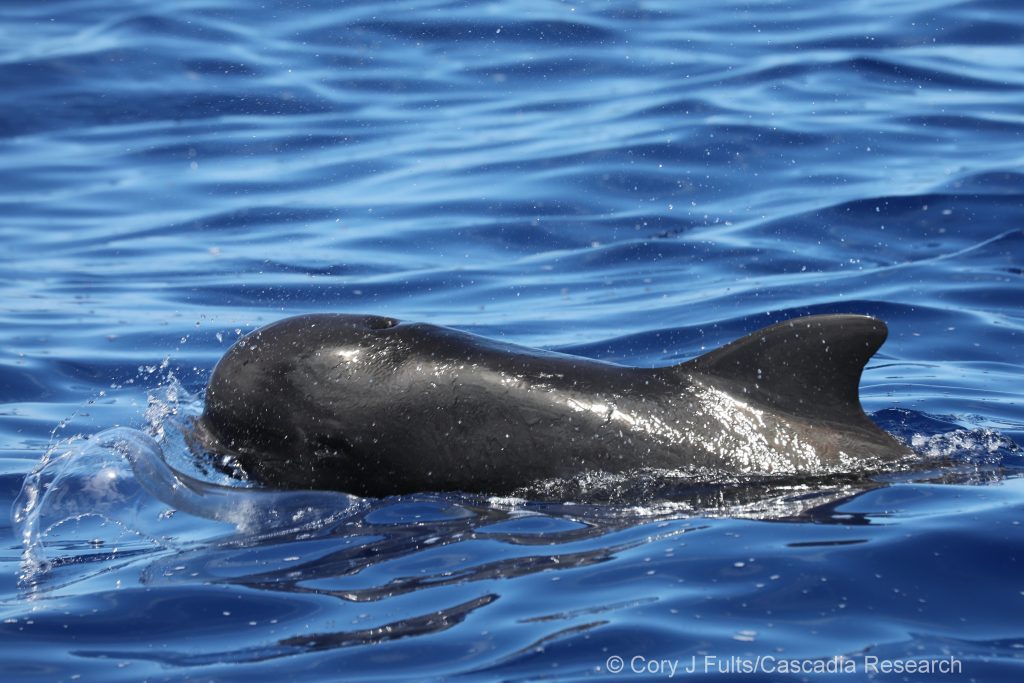
From the three groups of pilot whales encountered, we were able to get ID photos of about 20 individuals. There are three different communities of pilot whales around the main Hawaiian Islands, and the area off Lānaʻi is part of the range of the central community. Less is known about the central community than either the eastern or western communities, so these photos will help fill in that gap.
July 6th update
Today two of our crew brought the research vessel from Oʻahu to Lānaʻi. Previous crossings between islands have often resulted in interesting sightings, so we were prepared to work with any groups found. Turned out to be a very good decision - we encountered a group of false killer whales! As well as getting about a dozen identifications, we collected one skin & blubber biopsy sample (from an individual we've never previously biopsied), and documented the group feeding on a billfish.

In the photo above you can see the fish, identified as a Broadbill Swordfish, sandwiched between two false killer whales. The swordfish is upside down, and you can see the pec fins (on the left), the very upright anal fin (in the middle), and part of the tail fin (on the right side). Only part of the dorsal fin of one of the false killer whales (in the bottom left of the photo) is visible - the other only has part of the back visible.
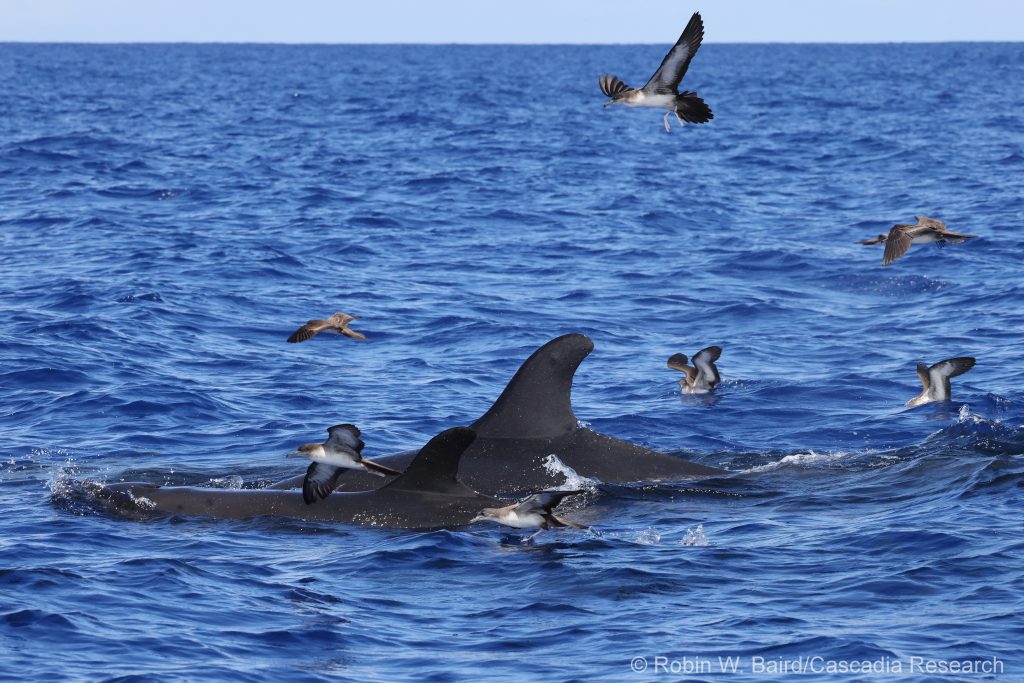
Given the size of the fish, over a dozen false killer whales converged to share it, and they were followed by many scavenging ʻUaʻu kani (Wedge-tailed Shearwaters)
Photos on this page taken under NMFS MMPA/ESA Scientific Research Permit No. 26596
If you want more information on this research effort, contact Robin Baird at rwbaird (at) cascadiaresearch.org